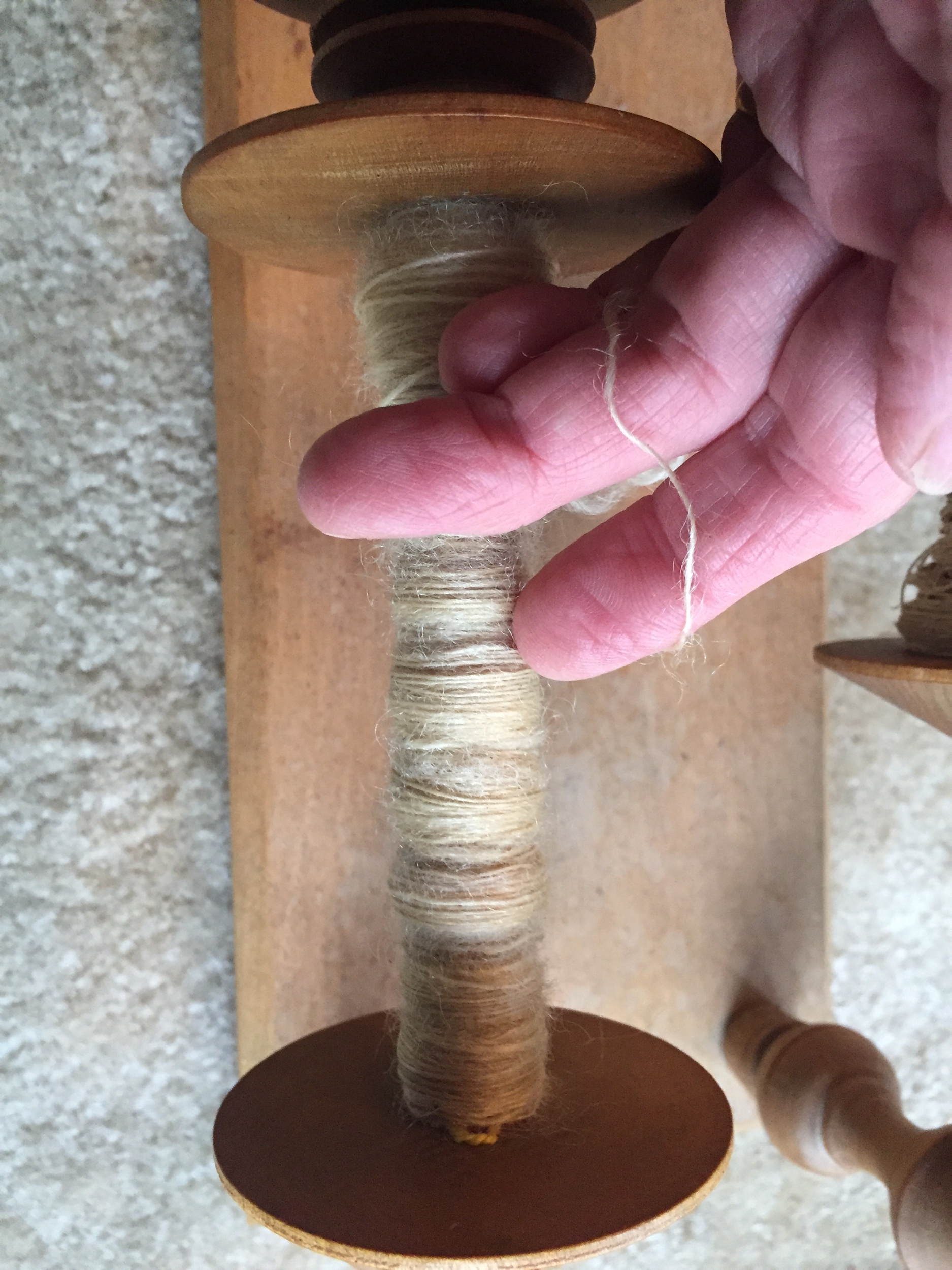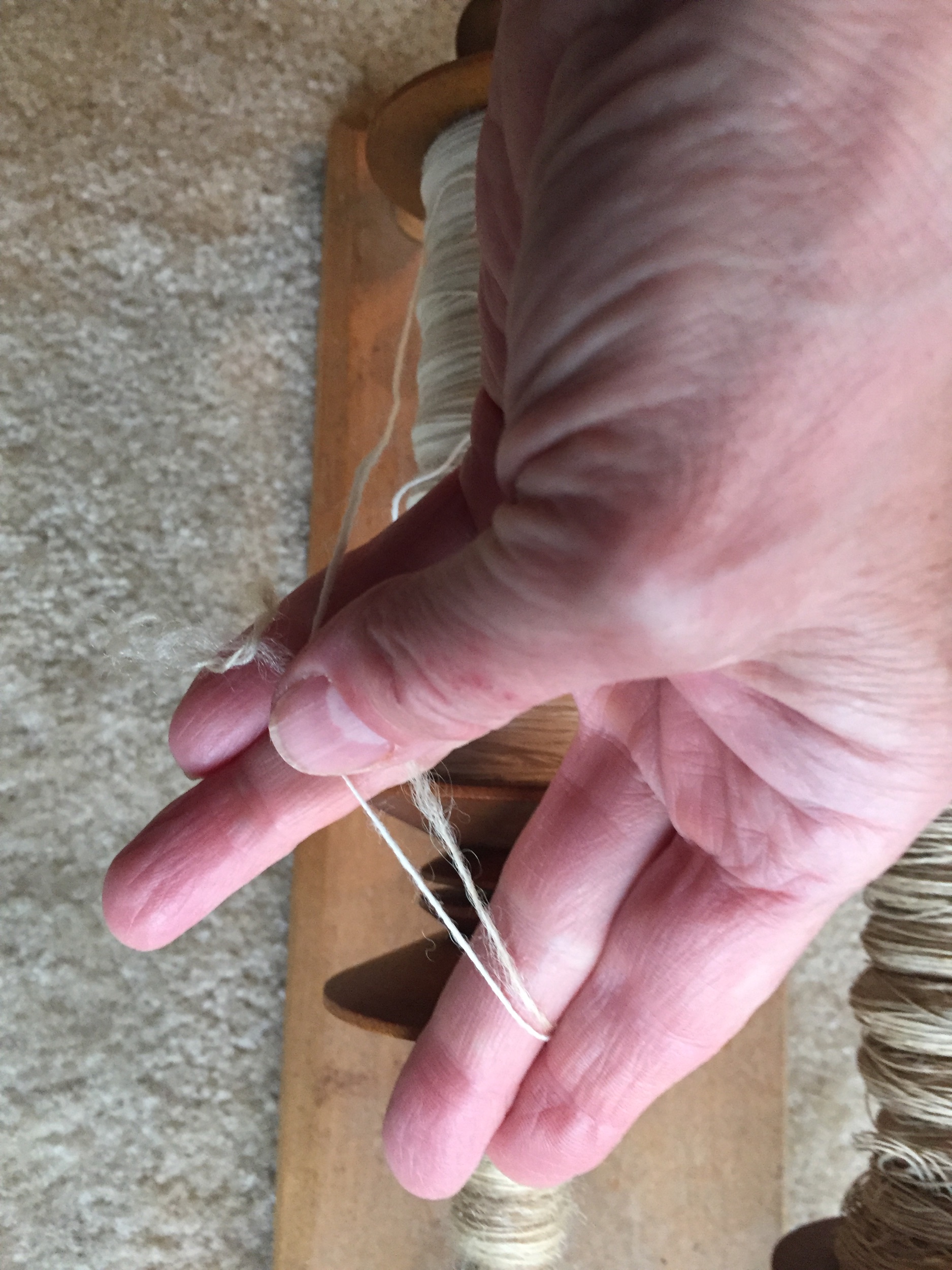This yarn is the same in structure to #2, but the goal was to try to get something a little softer, though (hopefully) still with good durability. So, we switched out the Border Leicester for some angora (bunny fluff!).
Sock yarn #3
‘Z’ twist Angora bunny, unwashed and spun from lock
’Z’ twist Perendale, unwashed and spun from lock, spun finer than for #1 and #2
’Z’ twist Polwarth, unwashed and spun from lock
These three singles were plied with a ‘S’ twist, and it ended up almost perfectly balanced (no tendency to twist itself up). The finished skein weighed 198.8 grams before washing, and 189.6 g after, so there was 5% loss in washing.
The angora single:
At one point my sister had pet angora bunnies, and while I don’t think any of this angora came from her bunnies, we did get it at that time, so I feel entirely justified in sharing cute bunny pictures.







The fiber was a bit matted and felted, and looked like it had been shoved into the bag directly after being plucked from the bunny. I decided to go ahead and spin it as it, without any preparation, so it wasn’t my most even of singles. It wasn’t too uneven, but for next time I will be carding it first.
We plied the yarn with an ‘S’ twist, and it came out balanced. Mommy, the official plier for this project so far, says that this yarn is finer than the other two-we’ll see how much so when I start knitting! It certainly is much softer, though I’m not sure that it is quite ‘next-to-face’ soft. The finished yarn weighed 198.8 grams before washing, and 189.6 grams after, so there was 5% loss in washing. It makes sense that the loss is half of what it was for #1 and #2, since for this yarn 2/3rds of the fibers didn’t have dirt and lanolin in them, whereas for #1 and #2, two of the three singles were fresh from the sheep.

































































